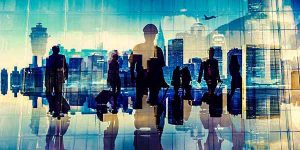Tourism Key For Economic Growth & Diversification In The MENA Region
Tourism can be a crucial driver of the growth and economic diversification for the Middle East and North Africa region concluded the 2017 Ministerial Forum organized by the World Tourism Organization (UNWTO) and the Arabian Travel Market (ATM) under the patronage of H.E. Eng. Sultan bin Saeed Al Mansoori, Minister of Economy of the United Arab Emirates. Yet, maximizing the sector’s power requires increased regional cooperation, prioritization of tourism in the national agendas, and building resilience and sustainability (Dubai, United Arab Emirates, 24 April 2017.

Moderated by CNN Becky Anderson, the UNWTO/ATM Ministerial Forum concluded that the main priorities for the region include human resources development, public/private sector cooperation, connectivity, technology, and sustainability.
Issues on discussion included the development of domestic tourism by engaging repeat travelers, the support to innovation and entrepreneurship, the need to improve the quality and ‘perception’ of tourism employment, visa facilitation, intra-regional connectivity, and the measurement of tourism’s impact through the recently launched UNWTO Initiative on Measuring Sustainable Tourism (MST).
Participants further recalled that much of the growth of the sector comes from the high level of support at the policy level it receives from many countries in the region as a tool to diversify oil-based economies.
H.E. Mohammed Khamis Al Muhairi, Under-Secretary of the Ministry of Economy, UAE, said that tourism has proven to be one of the main pillars of economic and social development in various countries. He pointed out that the MENA region has strong potential to become one of the world’s leading tourist destinations due to its extensive tourism attractions. He added that the region’s countries are at the threshold of a new phase of tourism growth which requires greater cooperation to ensure the maximization of opportunities offered by this sector. He also noted the need to consolidate partnerships at the government and private levels to overcome obstacles to their efforts to enhance the competitiveness of their respective tourism sectors and make the most of tourism’s impact on their growth and development.
Mr Al Muhairi further stated that “tourism is a top priority under the development policies of the UAE, revealing that the sector contributes 12.1% to the national GDP and accounts for around 10.4% of the domestic labor market”. “Investments to the sector exceeded AED 26 billion in 2016, a year which saw the number of visitors to the UAE reaching 24.8 million with a total spend of about AED 110 billion”, he added.
Commending the UNWTO/ ATM Ministerial Forum for providing an important platform for discussing the best ways to enhance the contributions of tourism to the development objectives of the UAE and other countries in the region he emphasized how the forum reflects the UAE’s keenness to support the global efforts to make tourism one of the pillars of sustainable development.

“Despite all external shocks, the Middle East and North Africa tell one of tourism’s biggest success stories. A story that brings an immense opportunity to make tourism a pillar of economic diversification, job creation, and sustainable development in this region” said UNWTO Secretary-General, Taleb Rifai.
“Today’s meeting is an opportunity to identify the priorities of tourism policy for the MENA destinations, strengthen regional cooperation and public-private partnerships that prepare the region to welcome the 195 million international tourist arrivals – almost triple the present volume of 72 million – forecasted by UNWTO for 2030,” he added.
Simon Press, Senior Exhibition Director, ATM, said: “The Middle East is developing at an extraordinary pace as countries diversify from a dependence on hydrocarbon receipts. As such it is vital leaders in the region continue to find new ways of capitalizing on tourism growth built on sustainability.
“The UNWTO & ATM Ministerial Forum provided an effective platform for stakeholders across the industry spectrum to identify the opportunities, as well as the challenges, that currently prevail throughout the region.”
The Middle East received 53.6 million international tourist arrivals in 2016. Arrivals decreased by an estimated 4% with very mixed results among the region’s destinations. International tourist arrivals to North Africa grew by 3% to 18.6 million.





You must be logged in to post a comment.